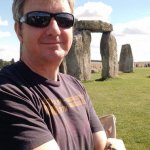The imposing archaeological site of Delphi sits over 1800 feet up on the south-western spur of Mount Parnassus, about 6 miles inland from the Corinthian Gulf, central Greece. The ancient temple complex of Delphi, which dates back at least 2700 years, was known throughout ancient Greece and beyond as the home of the celebrated oracle of Apollo, the Greek god of prophecy, music, healing, and light.
One aspect of the ancient Oracle at Delphi which has fascinated scholars, scientists and laymen alike, is the nature and cause of the trance state attained by the sanctuary's priestess (or Pythia). Could it have been caused by the laurel leaves which the priestess is supposed to have chewed? The waters of the nearby Castalian Spring? Or the vapours rising up from an underground cavern?
It is widely known that laurel leaves are not hallucinogenic, and until recently it was thought that the Pythia's supposed frenzied state could not have been induced by toxic gases rising from cracks in the ground because excavations had found no traces of such fissures.
However, in 2001 CE an interdisciplinary research team of scientists, led by geologist Jelle Z. de Boer of Wesleyan University, in Middletown, Connecticut, discovered evidence of the presence of ethylene, a potential hallucinogen, in the ancient temple's local geology and nearby springs. Thus the team have argued that ethylene intoxication was probably the cause of the Pythia's divinatory trances. Whilst this new research presents fascinating possibilities for the origin of the Pythia's trance state it also leaves a few questions unanswered.
The first is that if the enquirer and the priestess were face to face at ancient Delphi, as some researchers have suggested, then why was it only the priestess who was affected by these toxic gases? Another point is that the quest to find what exactly put the priestess of Apollo at Delphi into a trance ignores the fact that her altered state may well have been self-induced, perhaps to give the impression of objectivity when answering enquiries.
Another idea associated with the Pythia's supposed toxic high is the misconception that the Pythia rambled incoherent gibberish when in her trance, which had to be interpreted and reshaped into prophecies by the priests. In his book The Delphic Oracle, Its Responses and Operations, with a Catalogue of Responses (1981) American classical scholar Joseph Fontenrose (1903-1986 CE) challenged this notion.
Examining ancient sources and separating literary artifice from the Pythia's genuine responses to enquiries, Fontenrose found that these answers were made in clear and precise prose, and the priestess herself was represented in these texts as speaking lucidly and in her own voice. Indeed, as Ruth Padel has noted, Apollo-induced possession was the literary norm in Classical Greece.
The most relevant example being Cassandra, daughter of Priam and Hecuba of Troy, who, like the Pythia, is described as being 'possessed' by Apollo, while she uttered her oracles in a kind of frenzy. The only difference was that Cassandra's prophecies were destined never to be believed. Perhaps then, the only influence on the Pythia's state was the affect of the pneuma (the 'soul' or 'vital spirit', often associated in antiquity with a vapor), not as a toxic gas, but as the divine wisdom or breath of Apollo.






